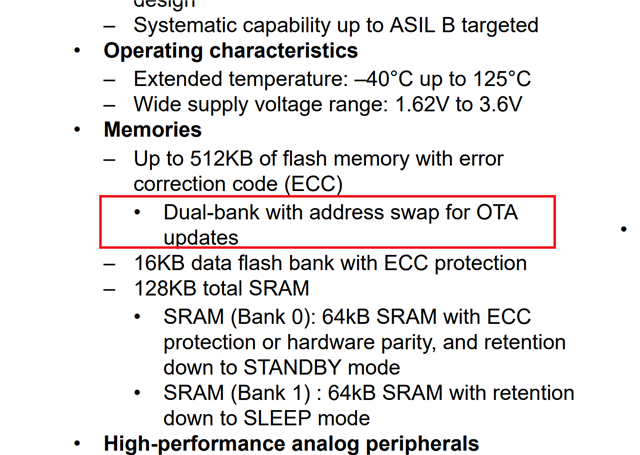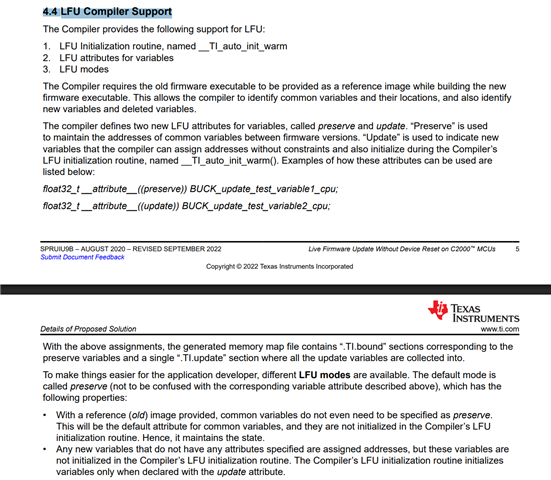Other Parts Discussed in Thread: MSPM0G3507
Tool/software:
Hi champs,
I am asking this for our customer.
Q1: As there are two flash banks, MSPM0G3519 should be able to do live firmware update (LFU) with reset and without reset. Is it right?
Q2: Would you please show us where to get an example for live firmware update "with" reset? This is also called OTA update in the datasheet below.

Q3: Would you please show us where to get an example for live firmware update "without" reset?
That is, all running/used preserved globals/statics are kept before, during, and after the firmware update and the compiler is responsible for new global/statics warm initialization.


